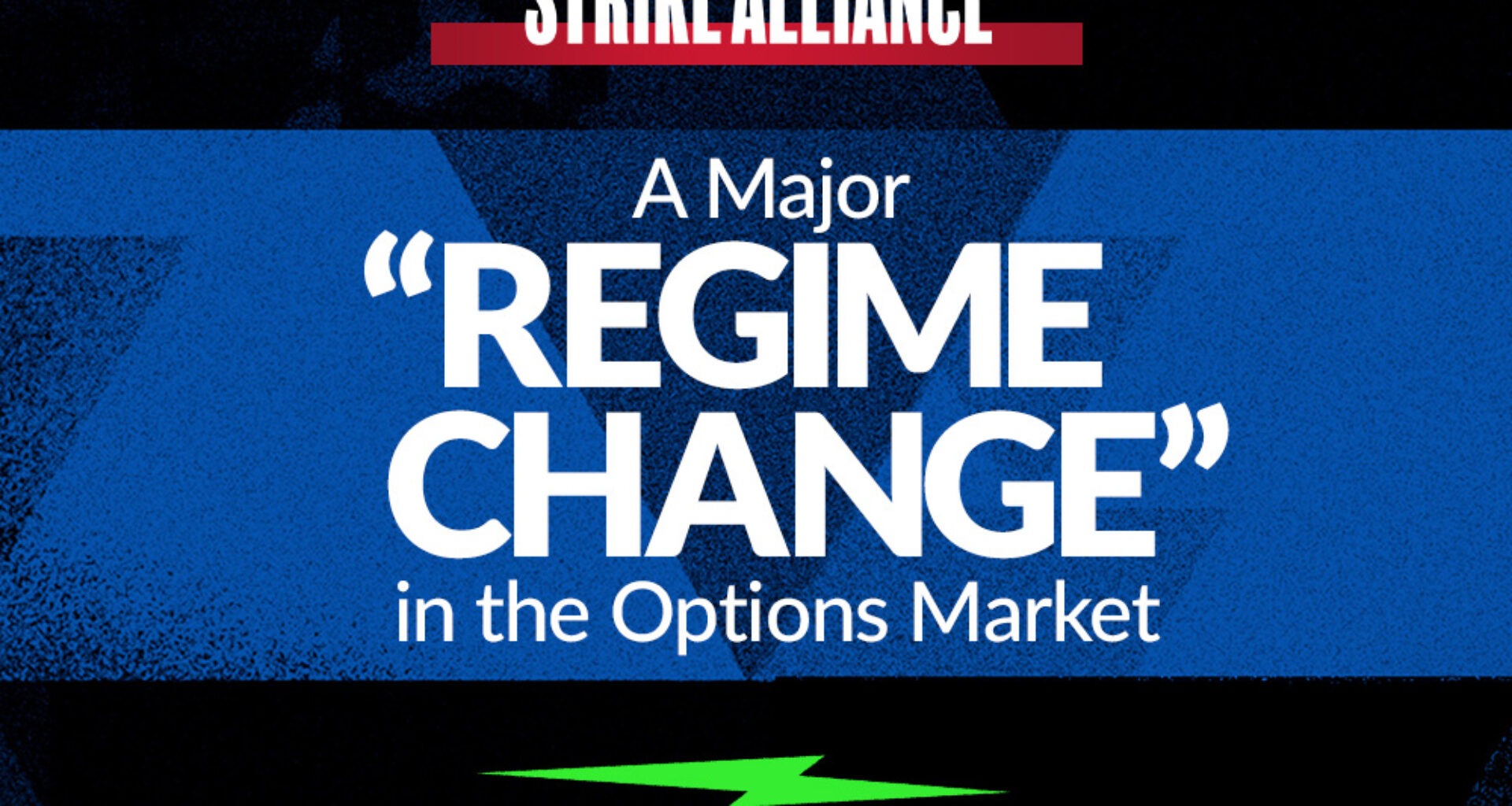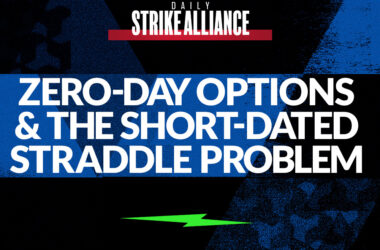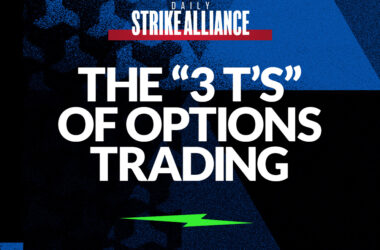Good morning, traders…
Jeff here.
The Chicago Board Options Exchange (CBOE) is the largest options exchange in the U.S., providing a marketplace for trading equity, index, and volatility options.
It sets the standard for options pricing and liquidity, offering insights into market sentiment and future expectations that no one else has.
And now, one of its top analysts is raising a big red flag about certain signals in the options market.
The CBOE’s Vice President and Head of Derivatives Market Intelligence, Mandy Xu, recently appeared on CNBC with a revelation that every options trader needs to take seriously…

She’s noticing a major shift happening in the market — something that could open up huge trading opportunities for those paying attention (and create serious risks for those who aren’t).
These kinds of moments don’t happen often, but when they do, they can separate those who stay ahead of the curve from those left scrambling to adapt.
The options market has always been a forward-looking indicator, often tipping its hand before major moves in the broader market.
And right now, with the CBOE seeing this regime change underway, the impact could be felt across stocks, sectors, and even other asset classes.
Ignoring these changes could mean missing out on some of the biggest opportunities of the year — or worse, finding yourself on the wrong side of the trade…
The Regime Change
Here’s what Xu has been noticing:
For the past couple of years, it’s seemed like fear was on vacation in the options market…
The demand for upside calls dominated, and put-buying reached some of its lowest levels in recent memory.
But in the last four months, that’s changed. Downside protection is back, especially in S&P 500 options.
Traders are starting to hedge against the idea that the easy-money rally is over. The options market is finally telling us the risks are real again.
But don’t misread this. If we zoom out, this is more of a shift to normalization than a signal of major panic…
Historically, puts have always traded more expensive than calls because fear of losses tends to drive more action than the desire for gains.
And now, we’re seeing what you’d call a more “typical” options market where downside risks are top of mind.
What’s Driving This Shift?
One major factor is dispersion. Traders are pricing in the possibility that certain sectors or stocks could face more pressure than others.
This is particularly true with tech. After a massive run, traders are rotating out of high-flyers and into safer plays.
Plus, we can’t ignore the fact that a new administration in the White House creates a type of political uncertainty the market hasn’t dealt with since 2020.
But so far, the sell-offs we’ve seen have been pretty concentrated. If the selling broadens out across all sectors, that’s when you’ll see the VIX — the market’s fear gauge — start to spike in a meaningful way.
This kind of rotation versus broad selloff is key for traders. If you’re focused on one or two sectors, you need to ask yourself: Will your strategy work elsewhere?
Don’t get caught off guard. If the rotation accelerates, the biggest winners and losers of 2025 will look very different than those from 2024.
Bonds Tell a Different Story
Meanwhile, the bond market is sending mixed signals. Open up your broker and look at the options chain for iShares 20+ Year Treasury Bond ETF (NASDAQ: TLT).
This ETF — a popular instrument for bond options — usually sees traders rushing to buy puts when bonds sell off.
Not this time.
Instead, the activity is concentrated on the call side. That suggests traders are betting bonds may have found their bottom…
Or at least, that the worst of the selloff is behind us…
This behavior is in stark contrast to stocks, where the fear of downside risk is dominating.
It could be that bond traders are taking a longer-term view, expecting rates to stabilize or even drop in the future.
But for the stock market, the focus remains squarely on short-term risks.
Volatility in Bursts
Another interesting pattern is how volatility events are playing out.
Over the past few months, we’ve seen a few big, single-day moves in the market — think August 15, December 18, and December 27.
But those moves haven’t stuck. They’ve been one-off events, not the sustained waves of volatility you would see in a bear market.
For that to change, we’d need to see a significant shift in the economic backdrop.
Persistent inflation, a more aggressive Federal Reserve, or economic shocks from tariffs could create the kind of sustained volatility we saw in 2022.
But until that happens, expect volatility to show up in quick bursts, not long trends.
What to Watch Beyond Stocks
Stocks aren’t the only game in town. Volatility is creeping into other asset classes…
Look at oil. Prices have moved higher recently, even with a strengthening dollar — a move that’s caught a lot of traders off guard.
Typically, a stronger dollar puts pressure on oil prices, but that correlation hasn’t held up. That’s a signal to pay attention to commodities, where demand dynamics are overpowering currency effects.
Currencies are another space to watch. The dollar’s strength has shaken up markets globally, but it’s also creating opportunities for traders who understand how to position in this environment.
We saw a little bit of dollar weakness post-inauguration yesterday, which could relieve some pressure on stocks. But it’s still in a major uptrend and important to watch.
Whether it’s oil, currencies, or equities, the message is clear: don’t ignore the macro indicators outside your usual trades.
After two back-to-back 25% up years for the stock market, the options market is shifting.
Traders are starting to think more defensively. There are more risks and uncertainties now.
That doesn’t mean you should run for cover, it means you must adapt to the trend reversal.
Watch the price action and pay close attention to how volatility is being priced…
Different asset classes are telling different stories right now. The key is figuring out where your edge lies and capitalizing on it.
Happy trading,
Jeff Zananiri
P.S. While most traders are scrambling to position themselves in this volatility, I’ve had a 7-win streak with my Burn Notice trades…*
If you want to start getting in on these setups before they take off, there’s only one place to start…
This THURSDAY, January 23 at 10:00 a.m. EST, I’m hosting a LIVE WORKSHOP to reveal my Burn Notices for next week.
Stop guessing, start burning — Click here to reserve your seat!
*Past performance does not indicate future results





